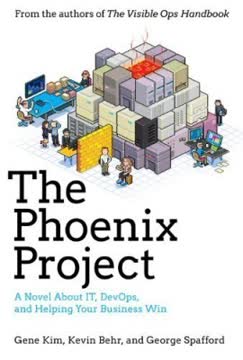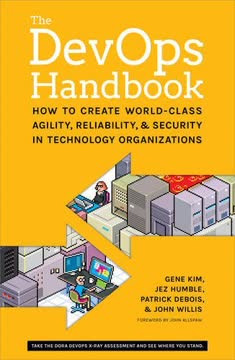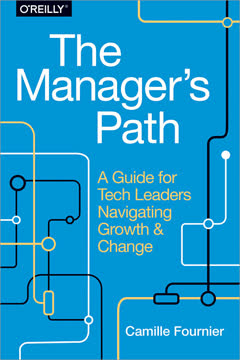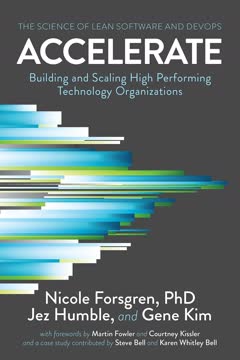つの重要なポイント
1. ゼロトラストネットワーク: サイバーセキュリティのパラダイムシフト
ゼロトラストモデルはこの図を内側から外側にひっくり返す。
セキュリティの根本的な変化。 ゼロトラストネットワークは、従来の境界ベースのモデルを放棄し、サイバーセキュリティに革命的なアプローチをもたらします。ネットワーク内での信頼を前提とするのではなく、ゼロトラストはデフォルトで信頼を前提としません。ユーザーやデバイスが企業ネットワークの内外に関わらず、このモデルは以下を要求します:
- すべてのネットワークリクエストに対する認証と認可
- すべてのデータの転送中の暗号化
- セキュリティポスチャの継続的な監視と検証
主要な原則:
- ネットワークは常に敵対的であると仮定する
- 外部および内部の脅威は常に存在する
- ネットワークの場所だけでは信頼を決定するのに十分ではない
- すべてのデバイス、ユーザー、およびネットワークフローは認証および認可される
- ポリシーは動的であり、複数のデータソースから計算される必要がある
2. 境界モデルの終焉: ゼロトラストアーキテクチャの採用
ポリシーのために信頼スコアモデルに切り替えることには欠点もある。
ネットワークセキュリティの進化。 従来の境界モデルは、ファイアウォールやVPNを使用して「安全な」内部ネットワークを作成することに依存していましたが、今日の複雑で分散したIT環境ではもはや十分ではありません。ゼロトラストアーキテクチャは、境界モデルの制限に対処するために以下を実施します:
- 信頼された内部ネットワークの概念を排除
- すべてのリソースに対する強力な認証と認可の実施
- 横方向の移動を制限するためのマイクロセグメンテーションの適用
- データの転送中および保存中の暗号化の使用
ゼロトラストの利点:
- 外部および内部の脅威に対するセキュリティポスチャの向上
- ネットワークトラフィックの可視性と制御の向上
- 攻撃面の縮小と侵害時の影響範囲の限定
- ネットワーク管理の簡素化とVPN依存の削減
3. アイデンティティとアクセス管理: ゼロトラストの礎
認証にはもう一つの興味深い特性がある。
アイデンティティは重要。 ゼロトラストモデルでは、強力なアイデンティティとアクセス管理(IAM)が基本です。すべてのユーザー、デバイス、およびアプリケーションは検証可能なアイデンティティを持ち、アクセスの決定はこれらのアイデンティティと関連する属性に基づいて行われます。
ゼロトラストにおけるIAMの主要コンポーネント:
- すべてのユーザーに対する多要素認証(MFA)
- ユーザーロールと属性に基づく細かいアクセス制御
- 継続的な認証と認可
- アイデンティティフェデレーションとシングルサインオン(SSO)機能
- リアルタイムのリスク評価に基づく動的ポリシーの施行
信頼スコアリング: 以下の要素を考慮した動的な信頼スコアリングシステムを実装:
- ユーザーの行動パターン
- デバイスの健康状態とコンプライアンス
- アクセスの場所と時間
- 要求されたリソースの機密性
4. デバイストラスト: ゼロトラストネットワークにおけるエンドポイントのセキュリティ
ゼロトラストネットワークでデバイスを信頼することは非常に重要であり、同時に非常に難しい問題でもある。
エンドポイントセキュリティは重要。 ゼロトラストネットワークでは、デバイスは攻撃者の潜在的な侵入ポイントであり、徹底的に保護され継続的に監視される必要があります。デバイストラストの主要な側面には以下が含まれます:
- 証明書やハードウェアバックの資格情報を使用した強力なデバイス認証
- デバイスの健康状態とコンプライアンスの継続的な評価
- 自動パッチ適用と更新
- エンドポイント検出と応答(EDR)機能
- デバイスの隔離とリモートワイプ機能
デバイストラストの実装:
- 堅牢なデバイスインベントリと管理システムを確立
- 安全なデバイスオンボーディングプロセスを実装
- 可能な場合はハードウェアセキュリティモジュール(HSM)やトラステッドプラットフォームモジュール(TPM)を使用
- デバイスの資格情報と証明書を定期的にローテーション
- 異常や潜在的な侵害を監視するためにデバイスの行動を監視
5. アプリケーションセキュリティ: コードから実行までの信頼構築
デバイスを信頼することは物語の半分に過ぎない。コードとそれを書いたプログラマーも信頼しなければならない。
パイプライン全体のセキュリティ。 ゼロトラスト環境におけるアプリケーションセキュリティは、実行中のアプリケーションのセキュリティを超えて、ソフトウェア開発ライフサイクル全体と実行環境を包含します。主要な考慮事項には以下が含まれます:
- 安全なコーディングプラクティスと開発者トレーニング
- 定期的なコードレビューと静的解析
- 脆弱性スキャンとペネトレーションテスト
- ランタイムアプリケーションセルフプロテクション(RASP)
- アプリケーションの行動の継続的な監視とログ記録
アプリケーション信頼対策:
- デプロイされたアプリケーションの整合性を確保するためのコード署名の使用
- アプリケーションレベルの暗号化とアクセス制御の実装
- アプリケーション間の通信を制限するためのマイクロセグメンテーションの採用
- コンテナ化されたアプリケーションのためのコンテナセキュリティとオーケストレーションツールの利用
- アプリケーションの特権に対するジャストインタイム(JIT)およびジャストイナフアクセス(JEA)原則の実装
6. ネットワークトラフィックセキュリティ: 暗号化、認証、および認可
暗号化は機密性をもたらすが、時折厄介なこともある。
すべての通信を保護。 ゼロトラストネットワークでは、すべてのトラフィックはその起源や目的地に関係なく暗号化、認証、および認可される必要があります。このアプローチはデータの機密性と整合性を確保し、不正アクセスや横方向の移動を防ぎます。
ネットワークトラフィックセキュリティの主要な側面:
- 強力な暗号化プロトコルの使用(例:TLS 1.3、IPsec)
- すべてのネットワーク接続に対する相互認証
- ネットワークセグメンテーションとマイクロセグメンテーション
- ソフトウェア定義境界(SDP)またはブラッククラウドアーキテクチャ
- ネットワークトラフィックパターンの継続的な監視と分析
実装戦略:
- 証明書管理のための公開鍵基盤(PKI)の展開
- 細かいアクセス制御のためのプロトコル対応プロキシの実装
- レガシーシステムのためのネットワーク暗号化ゲートウェイの使用
- 脅威検出のためのネットワーク検出と応答(NDR)ツールの採用
- DNSセキュリティ対策の実装(DNSSEC、DoH、DoT)
7. ゼロトラストの実装: 段階的かつ実践的なアプローチ
ゼロトラストは、ネットワーク内で信頼された通信を可能にするために認可決定の結果を注入する制御プレーンを提唱している。
段階的な実装。 ゼロトラストモデルへの移行は、慎重な計画と実行を必要とする大規模な取り組みです。段階的なアプローチを取ることで、既存の運用に対する影響を最小限に抑えながら、メリットを実現できます。
ゼロトラスト実装のステップ:
- 現在のセキュリティポスチャを評価し、ギャップを特定
- ゼロトラストの目標と優先順位を定義
- パイロットプロジェクトまたは特定のユースケースから開始
- 強力なアイデンティティとアクセス管理を実装
- デバイスのセキュリティと管理を強化
- アプリケーションとワークロードを保護
- ネットワークセグメンテーションとトラフィック暗号化を実装
- 監視と分析機能を展開
- ゼロトラストモデルを継続的に改善し拡張
主要な考慮事項:
- 組織全体のステークホルダーを巻き込む
- ユーザーエクスペリエンスに焦点を当て、採用を確保
- 可能な限り既存のセキュリティ投資を活用
- クラウドおよびハイブリッド環境との統合を計画
- ゼロトラスト実装の効果を測定するための指標を開発
8. 人的要素: ゼロトラストにおけるソーシャルエンジニアリングと物理的セキュリティ
ゼロトラストネットワークでは、信頼されたデバイスで信頼された人間に行動を取らせるソーシャルエンジニアリング攻撃は依然として懸念事項である。
人的脆弱性は依然として存在。 ゼロトラストは技術的なセキュリティを大幅に向上させますが、人間の要素は依然として潜在的な弱点です。ソーシャルエンジニアリング攻撃、内部脅威、および物理的セキュリティリスクは、技術的なコントロールと並行して対処する必要があります。
人的リスクに対処するための戦略:
- すべての従業員に対する包括的なセキュリティ意識トレーニング
- フィッシングやソーシャルエンジニアリングのシミュレーション演習
- 機密情報の取り扱いに関する明確なポリシーと手順
- 物理的セキュリティ対策(例:アクセス制御、監視)
- 背景調査と定期的なセキュリティクリアランスのレビュー
- 内部脅威の検出と防止プログラム
セキュリティと使いやすさのバランス:
- ユーザーフレンドリーなセキュリティツールとプロセスの実装
- セキュリティ対策の明確な説明を提供
- 異なるユーザーのニーズに合わせた複数の認証オプションを提供
- ユーザーに負担をかけずに異常を検出するための行動分析の使用
- 定期的にフィードバックを収集し、ユーザーエクスペリエンスを向上させるためにポリシーを調整
人的要素に対するセキュリティ対策は、ゼロトラストの技術的側面を補完し、全体的で強靭なセキュリティポスチャを構築するために重要です。
最終更新日:
FAQ
What's Zero Trust Networks about?
- Security Paradigm Shift: Zero Trust Networks by Evan Gilman introduces a security model that assumes no trust in any network, internal or external, requiring verification for every access request.
- Framework for Secure Systems: The book provides a comprehensive framework for designing secure systems in untrusted environments, moving away from traditional security assumptions.
- Holistic Approach: It covers user, device, and application trust, offering strategies to manage these elements within a zero trust architecture.
Why should I read Zero Trust Networks?
- Modern Threats Addressed: The book is crucial for understanding and combating cybersecurity threats that exploit traditional perimeter defenses.
- Practical Guidance: It offers actionable design patterns and considerations for real-world systems, valuable for network engineers and security professionals.
- Expert Insights: Authors Evan Gilman and Doug Barth share their extensive experience with zero trust principles across various organizations.
What are the key takeaways of Zero Trust Networks?
- Assume Hostility: The network is always assumed to be hostile, shifting focus from perimeter security to rigorous verification of every access request.
- Dynamic Policies: Emphasizes the need for policies that adapt based on real-time data and context, rather than static rules.
- Trust Management: Introduces trust scores based on user and device behavior for nuanced access control decisions.
What is the zero trust model as defined in Zero Trust Networks?
- No Implicit Trust: Operates on the principle that no entity should be trusted by default; every access request must be authenticated and authorized.
- Continuous Verification: Requires ongoing verification of user identities and device integrity to ensure legitimate access.
- Dynamic Security Policies: Policies are dynamic, based on multiple data sources, allowing for fine-grained access control.
How does Zero Trust Networks define a zero trust network?
- Five Fundamental Assertions: The network is hostile, threats exist at all times, locality is not sufficient for trust, every access must be authenticated, and policies must be dynamic.
- Contrast with Traditional Models: Focuses on securing every interaction and minimizing trust assumptions, unlike traditional perimeter defenses.
- Holistic Security Approach: Integrates security into core operations rather than treating it as an add-on.
How does Zero Trust Networks address identity management?
- Centralized Identity Provider: Advocates for a centralized system to manage user authentication and authorization, ensuring consistent identity verification.
- Multifactor Authentication: Emphasizes the importance of MFA to strengthen identity security and reduce unauthorized access risks.
- Regular Audits and Updates: Suggests regular audits and updates to identity management practices to adapt to new threats.
What are the roles of the control plane and data plane in a zero trust network?
- Control Plane: Manages access requests, enforces policies, and maintains the network's security posture, dynamically configuring the data plane.
- Data Plane: Handles actual traffic and enforces control plane decisions, ensuring only authorized requests are processed.
- Separation of Responsibilities: Minimizes lateral movement risk, with the control plane continuously monitoring and adjusting access.
How does Zero Trust Networks suggest managing trust in users?
- Separate User and Device Trust: User trust should be managed independently from device trust due to different security implications.
- Identity Authority: Establishing a centralized identity authority is crucial for validating user identities and managing access rights.
- Adaptive Authentication: Advocates for methods that adjust based on trust scores and context, enhancing security without compromising user experience.
What are the best practices for implementing zero trust as outlined in Zero Trust Networks?
- Start with a Risk Assessment: Conduct a thorough assessment to identify critical assets and vulnerabilities, prioritizing focus areas.
- Implement Least Privilege Access: Ensures users have only necessary permissions, minimizing potential damage from compromised accounts.
- Continuous Monitoring and Response: Establish mechanisms to detect and respond to suspicious activities in real-time, maintaining network integrity.
How does Zero Trust Networks address the challenges of legacy systems?
- Authentication Proxies: Suggests using proxies to bridge legacy systems with zero trust principles, allowing secure access without infrastructure compromise.
- Incremental Adoption: Encourages gradual integration of zero trust principles with legacy systems, enhancing security measures over time.
- Secure Introduction Focus: Highlights the importance of secure introduction processes for legacy devices, ensuring authenticated and trusted connections.
What are the challenges of transitioning to a zero trust network mentioned in Zero Trust Networks?
- Cultural Resistance: Transition may face resistance from employees used to traditional security practices, requiring effective communication and training.
- Complexity of Implementation: Involves reconfiguring systems and processes, posing technical challenges that organizations must prepare for.
- Resource Allocation: Requires substantial resources, including time, personnel, and budget, necessitating careful planning to avoid operational disruption.
What are the potential attack vectors against a zero trust network as discussed in Zero Trust Networks?
- Identity Theft: Compromised user or device identities can bypass security measures, making identity protection crucial.
- Distributed Denial of Service (DDoS): Networks can still be vulnerable to DDoS attacks, requiring additional mitigation measures.
- Social Engineering: Exploits human vulnerabilities, necessitating training and awareness programs to recognize and respond to threats.
レビュー
ゼロトラストネットワークは、平均評価4.02/5で主に好意的なレビューを受けている。読者はゼロトラストの概念についての包括的な概要を称賛しているが、一部の人々は理論的すぎると感じている。この本はゼロトラストネットワークの哲学を説明し、従来のセキュリティモデルと比較する点で高く評価されている。批評家は実践的な実装の詳細が不足していると指摘し、大規模な組織に最も関連性があるかもしれないと示唆している。全体として、適用性にいくつかの制限があるにもかかわらず、新興のセキュリティパラダイムへの貴重な入門書と見なされている。
Similar Books














